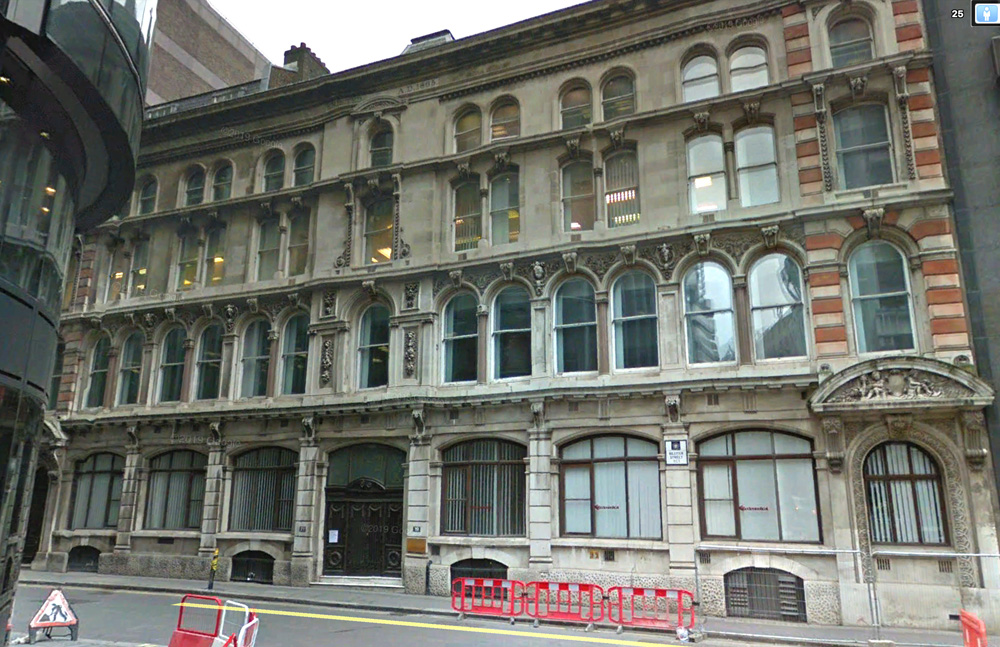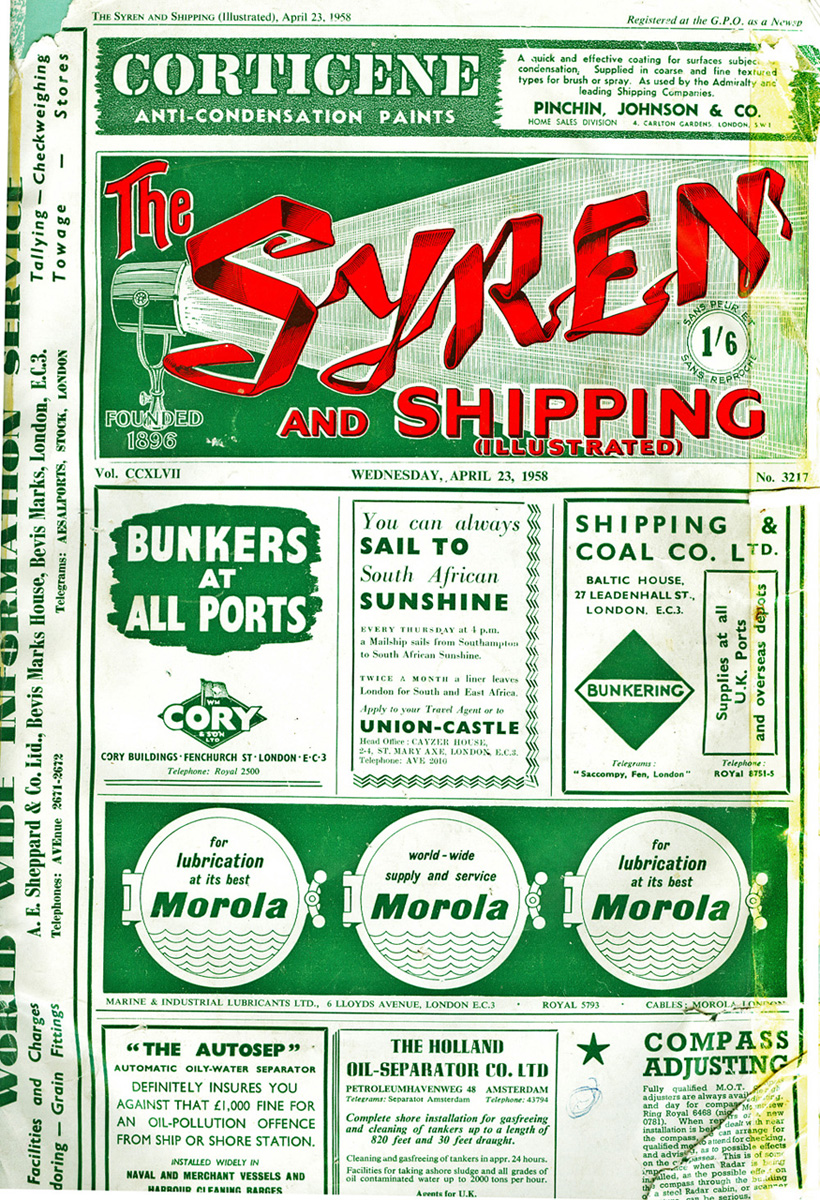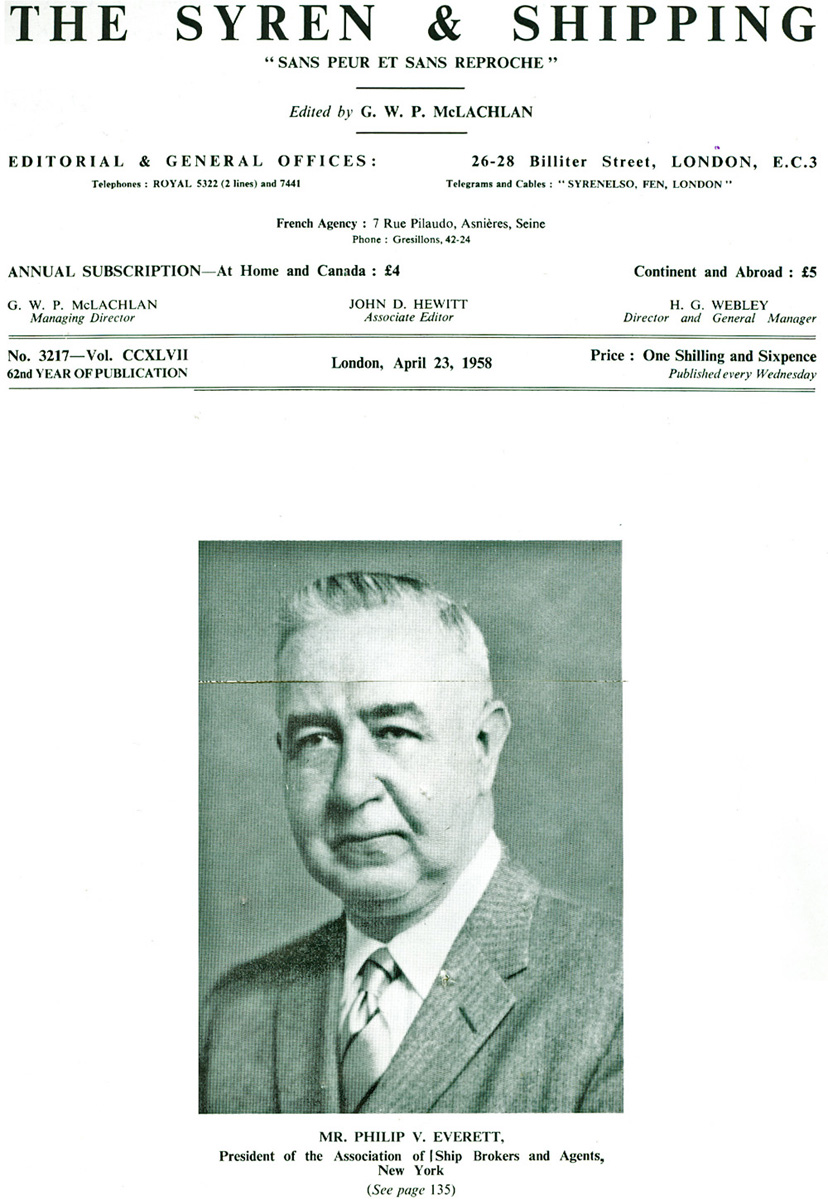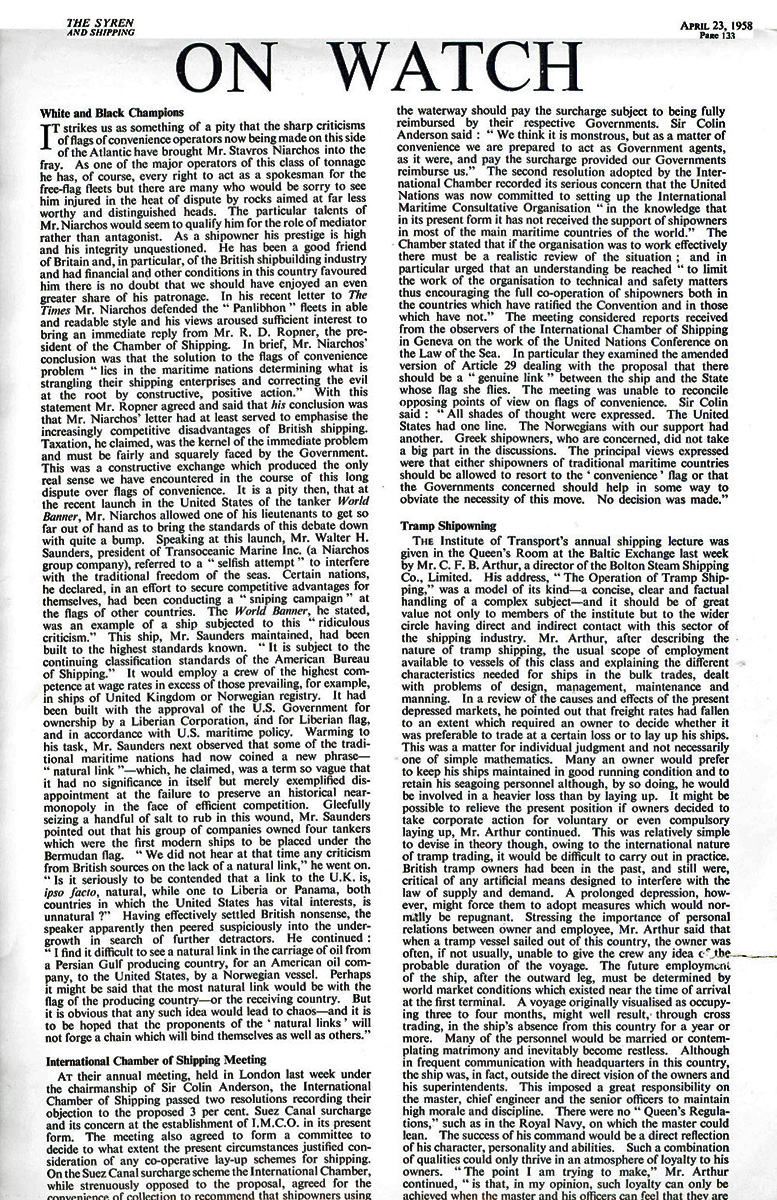THE SYREN AND SHIPPING ILLUSTRATED
( 'Sans peur et sans reproche' the motto of the Syren and Shipping)
by Robert C. Priddy
After nearly two years, in 1959, I resigned from my position as assistant editor - one of the two writers of the entire weekly shipping journal - so as to pursue my interest in jazz guitar. I was only 21 years old when I began there. I had found the work interesting for the first few months, learning about editing, the printing processes and almost anything to do with shipping and the related industries. I visited launches and maiden voyages, mixed with the national shipping journalists on junket trips all around the UK and even to France, attended official dinners given by major ship owners and many an unusual PR event - all travel free by first class and often with other perks like free drinks and samples of products.
I learned the basics of journalism from the Associate Editor in his late 40s, John Hewitt, with whom I shared an office and worked on preparing the weekly edition for about one and a half years, as well as producing special supplements to celebrate annual shipping and industrial exhibitions. Between us we did all the writing and editing (apart from a broker on the Baltic Exchange who - using the pen name 'Captain Cuttle' - secretly visited each week to deliver his insider report on shipping finances and rumours. The nominal editor - elderly G.W.P. MacLachlan, had moved over to the cushy life, never seen in the offices except when he visited the Short's Wine Bar on the corner of Billiter Street or when the firm had its annual 'party'. My real interests lay elsewhere and I became rather critical of the nature and real function of the work, journalists writing mainly what the advertisers wanted to see (so they would continue to buy advertising space from the journal) and largely for a highly-specialised readership... the Syren was mostly found on tables in all shipping magnates' waiting rooms and related businesses.
The best part of the work was the free 'junkets', visits to shipyards for launches and sea trials or 'handing over' to the shipping company (such as P&O) with posh accommodation and 1'st class travel, even to Le Havre to join the 'Niew Amsterdam' on its maiden voyage to Southampton and on to New York. I was invited, to go on to NY and return for free, but I had to return to my desk at the Syren instead. I invariably went with the London journo gang of about 30 reporters who covered shipping to see sea trials and deliveries of ships on the Tyne, at John Brown's yard of the Clyde, a P&O liner at Gravesend and diverse other maritime events. I also witnessed the introduction to the world by ICI of polystyrene (then called 'polyzote') and received a brandy flask encased in the first batch of the product. They had hired part of the Royal Festival Hall for its launch. Now this product and its derivatives are filling the oceans and strangling the world's nature. I also attended the introduction of a new and extremely precise electronic apparatus at some firm in London which was demonstrated and measured the actual speed of light between points in London and New York, whereby the actual speed was corrected to some decimal points. At Little Venice I saw the beginning of the Inland Waterways revival with narrow boats for holidays, somewhat hazily after the friendly PR man filled me with Martinis.
I also visited diverse minor firms whose activities we covered, such as the first ever commercial fiberglass boat builder on Eel Pie Island, Thorneycrofts the shipbuilders at Portsmouth where five of us interviewed Quintin Hogg (aka Lord Hailsham). I met very prominent and not-so prominent people in the shipping and related financial world who came to our offices, and not least other individuals who turned up for one strange reason or another. The reason I resigned was entirely my desire to become a musician, also because I had found the rituals of editing mostly rather boring and felt the City environment and its types were not for me. My last major project was to produce a special extra edition covering a very large Exhibition of Shipbuilding and Marine Engineering at Earl's Court in 1958. Since I had become efficient and had got on well in the environment, I was offered a raise. Alternatively it was suggested that the Syren should pay for me to join the Baltic Exchange under the protection of Captain Cuttle himself so I could step into his shoes when he would resign the secret post of leaker of inside news about the freight market and finances to the Syren (one of the reasons many bought the journal). It would have involved becoming a fixed part of the closed social environment of brokers and owners, which required total integrity and full knowledge of one's life by the insiders so that word-of-mouth financial agreements could be totally relied upon. Nothing was less appealing to me, even though such people had every advantage as investors and opportunities to become ship owners. I would have had to join much the same dining or other clubs as members of the Baltic, preferably wearing pinstripes and bowler hat. In such a role one had to attend all the boring conferences and annual dinners - including the Lord Mayor's - and in tails. Instead I opted for a hand-to-mouth existence as an underpaid musician with jazz ambitions, wearing outfits that would have marked me out as someone to avoid in the City.
In 1960, after I left, the Syren moved from its Dikensian offices in Billiter Street in the City (just opposite the road where the then new - now former - Lloyds' building had recently been built).
Billiter Street has largely been rebuilt, but the same buildings as 20-21 as Syren and 26 are seen here:-

The following scans are of parts of the last edition I received, which came out just after I had left. The Syren met its demise some years later, along with most of the British shipbuilding industry and the 'flagging out' of so much of her merchant fleet to cheap 'flags of convenience'. I hope it may be of interest to some who remember the journal from their younger days.
Main contents of the April 23, 1958 edition.
The Syren and Shipping Illustrated - frontispiece, April 1958
Main editorial - 'On Watch' (by associate editor John Hewitt)
continuation of 'On Watch' and then 'Ships in the News'
'Ships in the News' continued then 'Mechanised Model of P and O's "Canberra"
Continuation of the 'Canberra' overview, then 'Spanish-built liner 'Cabot San Roque'
'Watch Below' and 'Heard on the Baltic' by Captain Cuttle
'Round the World' by Robert Priddy

The Syren and Shipping Illustrated - front cover:-

Editorial 'On Watch':-




